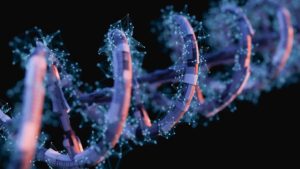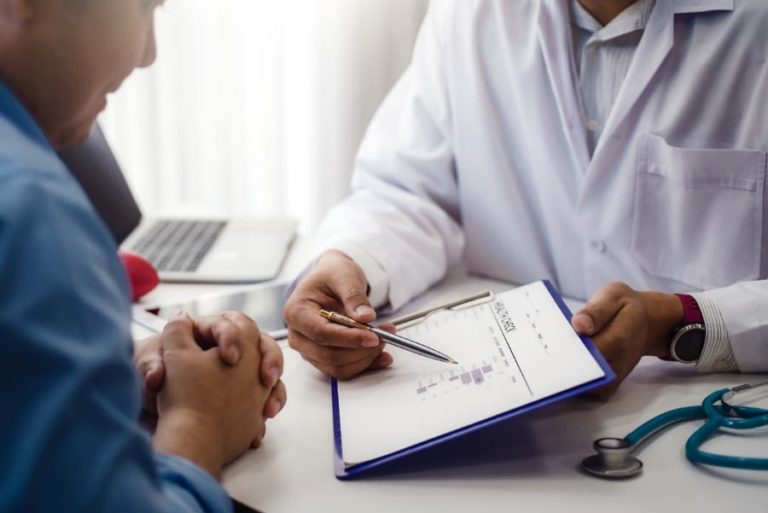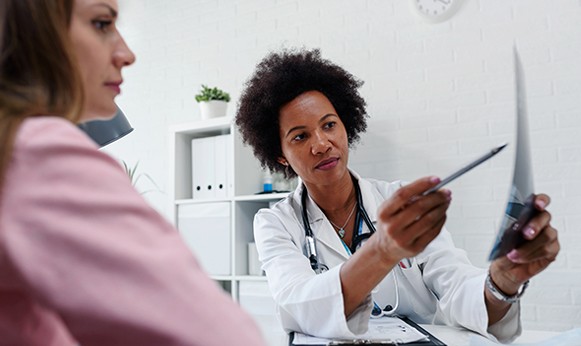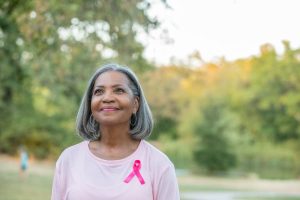
Likelihood of a Genetic Link to Your Cancer Diagnosis
If you’ve been diagnosed with cancer and suspect it might be genetic, there’s a chance you could be right. The American Cancer Society estimates that
HIPAA Alert: Potential Data Breach Learn More
Questions on Oncology, Hematology and/or Infusion Clinical Services due to COVID-19 Crisis – CALL 833-698-1623
Important Information for Our Patients Regarding the Coronavirus.
RCCA Providing Area Cancer Patients with Access to Care During Coronavirus Outbreak
RCCA Offering Patients Virtual Visits During Coronavirus Pandemic
Non-Hodgkin lymphoma is one of the more common cancers in the United States, according to the American Cancer Society. It accounts for about 4% of all cancers diagnosed, and researchers estimate that there are around 81,000 new cases every year. While the disease sometimes spreads slowly, it often can be aggressive, making awareness and early detection imperative.
People dealing with non-Hodgkin lymphoma do not need to face the disease alone. The board-certified medical oncologists and hematologists of Regional Cancer Care Associates (RCCA) specialize in accurately diagnosing and effectively treating this disease at locations throughout Connecticut, Maryland, New Jersey, and the Washington, D.C., area. Learn more about non-Hodgkin lymphoma and the approach Regional Cancer Care Associates takes to help patients overcome it.
Non-Hodgkin lymphoma is a type of cancer that attacks the lymphocytes, white blood cells that are part of the body’s immune system. These cancers occur when genes inside certain cells mutate or change. Although this cancer usually starts in lymph nodes or other lymph tissue, it can sometimes affect the skin. Non-Hodgkin lymphoma most often affects adults but can occur at any age.
Non-Hodgkin lymphoma often is confused with Hodgkin lymphoma. Even though the names of both diseases are derived from that of a 19th Century British physician, Thomas Hodgkin, they affect different types of lymphocytes and require different treatments to ensure the best results.

Non-Hodgkin lymphoma is a term used to describe many different types of lymphoma. More than 60 non-Hodgkin lymphoma subtypes have been identified. These subtypes are categorized by the characteristics of the lymphoma cells, including their appearance, the presence of proteins on the surface of the cells, and their genetic features. The subtypes of non-Hodgkin lymphoma generally fall within two categories:
A patient’s subtype plays a large part in the type of treatment he or she receives. No matter the subtype, all non-Hodgkin lymphomas can move from their point of origin to other parts of the lymph system. If left untreated for too long, the cancer can spread to other parts of the body.
In most cases, doctors do not know the cause of a patient’s non-Hodgkin lymphoma. Evidence suggests that a weakened immune system contributes to some cases, while past viral infections may play a role in the development of other cases. While researchers are still exploring the various causes of non-Hodgkin lymphoma, some factors are known to increase risk. These include:
The risk of developing non-Hodgkin lymphoma increases with age. Most cases of the disease occur in patients who are in their 60s or older. However, some types of lymphoma are more common in younger people.
A family history of non-Hodgkin lymphoma increases one’s chances of developing the disease. Additionally, individuals with an autoimmune disease are at a higher risk of developing non-Hodgkin lymphoma. For instance, people with rheumatoid arthritis, systemic lupus erythematosus (SLE, or lupus), Sjogren’s disease, celiac disease (gluten-sensitive enteropathy), and others may be at an increased risk.
Evidence suggests that exposure to certain chemicals, such as benzene and certain herbicides and insecticides (weed- and insect-killing substances), may be linked to non-Hodgkin lymphoma.
Radiation exposure also increases a person’s chance of developing the condition. Patients treated with radiation therapy for some other cancers have a slightly increased risk of developing this disease later in their lives.
People with a weakened immune system are at increased risk for non-Hodgkin lymphoma. Those who needed immune-suppressing drugs to treat a medical condition also have a higher risk of developing the condition. In addition, people infected with the human immunodeficiency virus (HIV) are at increased risk.
Certain infections that directly affect lymphocytes are known to increase the risk of non-Hodgkin lymphoma. For example, infection with the Epstein-Barr virus (EBV) has been linked to Burkitt lymphoma, a subtype of non-Hodgkin lymphoma. EBV also has been linked with some less common types of lymphoma.
Having a risk factor, or even many risk factors, does not automatically mean an individual will develop a disease. Some people diagnosed with non-Hodgkin lymphoma have few or no known risk factors.
Many patients with low-grade lymphoma experience little or no symptoms at first. However, symptoms may worsen with time. In contrast, high-grade lymphoma typically presents quickly with clear symptoms. Some common early signs of non-Hodgkin lymphoma include:
Depending on the type, non-Hodgkin lymphoma can cause different symptoms affecting various areas throughout the body. Patients may notice signs of the disease in the following areas:
Non-Hodgkin lymphomas that develop in the abdomen can cause swelling or pain in the surrounding area. This is due to swelling of the lymph nodes or organs, including the spleen and liver.
When lymphoma starts in the thymus or lymph nodes in the chest, symptoms often include coughing, trouble breathing, or a feeling of chest pain or pressure. This is because the nearby trachea is experiencing pressure.
Non-Hodgkin lymphoma of the brain can have a dramatic impact on the rest of the body. Common symptoms of brain-related lymphomas include headache, trouble thinking, weakness in parts of the body, personality changes, and sometimes seizures.
Other types of non-Hodgkin lymphomas that can spread to the central nervous system are cause for concern as well. These lymphomas can produce symptoms such as double vision, facial numbness, and trouble speaking.
Non-Hodgkin lymphoma of the skin usually is easily identified as it can be seen or felt. It appears as red or purple lumps or bumps under the skin and is often itchy.
Detecting non-Hodgkin lymphoma in its earliest stages is important as it gives treatment the best possible chance to succeed. Diagnosis involves a series of examinations and tests performed by medical professionals. When evaluating a patient, a physician or advanced practice provider such as a nurse practitioner or physician assistant will generally begin by conducting a physical examination, looking for swelling in the lymph nodes of the neck, groin, and armpits. Physicians might also inquire about a patient’s family history.
To further investigate, blood tests and laboratory analysis may be necessary. This involves measuring the balance between types of blood cells and/ or analyzing a sample of bone marrow to look for abnormal cells.
Other diagnostic methods include imaging exams such as X-rays, CT scans, and PET scans to check for swollen lymph nodes or other signs of the disease. A histopathological evaluation and lymph node biopsy may be used to test samples for the presence of abnormal cells.

The choice of treatment for non-Hodgkin lymphoma generally depends on the subtype of the lymphoma, how far it has progressed, the health of the patient, and other factors. In some cases, extensive treatment approaches are not required. If the condition is slow-growing, physicians may recommend watchful waiting and active surveillance. With this approach, doctors will closely monitor a patient’s condition with regular checkups.
In cases where the condition is aggressive or is causing symptoms, active treatment may be necessary. Typical approaches to treating non-Hodgkin lymphoma include:
Chemotherapy is one of the main treatment options. With this treatment, anti-cancer drugs usually are injected into a vein intravenously (IV) or taken by mouth.
When entering the bloodstream, these drugs can reach almost all areas of the body, making chemotherapy a highly effective treatment option. Chemotherapy may be used alone or combined with other treatments.
Targeted therapy drugs are designed to find and attack cancer cells. They work by targeting the specific biochemical characteristics that help a cancer cell survive and grow.
Using high-energy rays, radiation therapy works to kill cancer cells. It can be used as the main treatment for some types of non-Hodgkin lymphomas if detected early enough because these tumors often respond very well to radiation. For more advanced cases, radiation may be combined with other types of treatment.
This treatment for non-Hodgkin lymphoma involves boosting the patient’s immune system to attack the cancer cells. Immunotherapy uses man-made versions of the normal components of the immune system, which can be effective in killing lymphoma cells or slowing their growth.
If these treatment approaches do not work, physicians may turn to a bone marrow transplant, also known as a stem cell transplant.
Unfortunately, there is no sure way to completely prevent non-Hodgkin lymphoma. However, there are steps high-risk individuals can take that might help lower their risk of developing the disease. These steps can include limiting the risk of certain infections, eliminating exposure to certain chemicals or potential carcinogens, and other strategies.
Taking the necessary precautions to maintain a healthy immune system also may help prevent non-Hodgkin lymphoma. This can involve maintaining a healthy weight, keeping physically active, and eating a nutritious diet that includes a good variety of fruits, vegetables, and whole grains.
Thanks to ongoing research and new treatments, people are living longer with non-Hodgkin lymphoma than ever before. No matter the type of lymphoma, the best treatment approach involves early detection and proactive management.
Patients diagnosed with non-Hodgkin lymphoma and looking for compassionate, personalized care can turn to Regional Cancer Care Associates for treatment. RCCA’s team of medical oncologists is proud to offer the most advanced treatments, including breakthroughs such as immunotherapy and targeted therapy.
Care is available at more than 20 community-based locations throughout New Jersey, Connecticut, Maryland, and the Washington, D.C., area. Receiving care from the RCCA team of experienced board-certified oncologists, patients benefit from evidence-based treatment plans designed specifically for them. For more information about the treatment of non-Hodgkin lymphoma, other cancers, and benign blood disorders, contact Regional Cancer Care Associates.
If you or a loved one is battling non-Hodgkin lymphoma, you aren’t alone. Our experts at Regional Cancer Care Associates are dedicated to delivering accurate diagnoses and effective treatments. To find out more or make an appointment, get in touch with us at one of our locations throughout Connecticut, Maryland, and New Jersey.

If you’ve been diagnosed with cancer and suspect it might be genetic, there’s a chance you could be right. The American Cancer Society estimates that

If you or a loved one has been diagnosed with breast cancer, you might have heard the term “triple-negative” breast cancer. The American Cancer Society

With care centers in New Jersey, Connecticut, Maryland, Massachusetts and the Washington, D.C., area, thousands of patients each year have come to rely on the expertise, dedication and compassion of Regional Cancer Care Associates.

Regional Cancer Care Associates is one of fewer than 200 medical practices in the country selected to participate in the Oncology Care Model (OCM); a recent Medicare initiative aimed at improving care coordination and access to and quality of care for Medicare beneficiaries undergoing chemotherapy treatment.